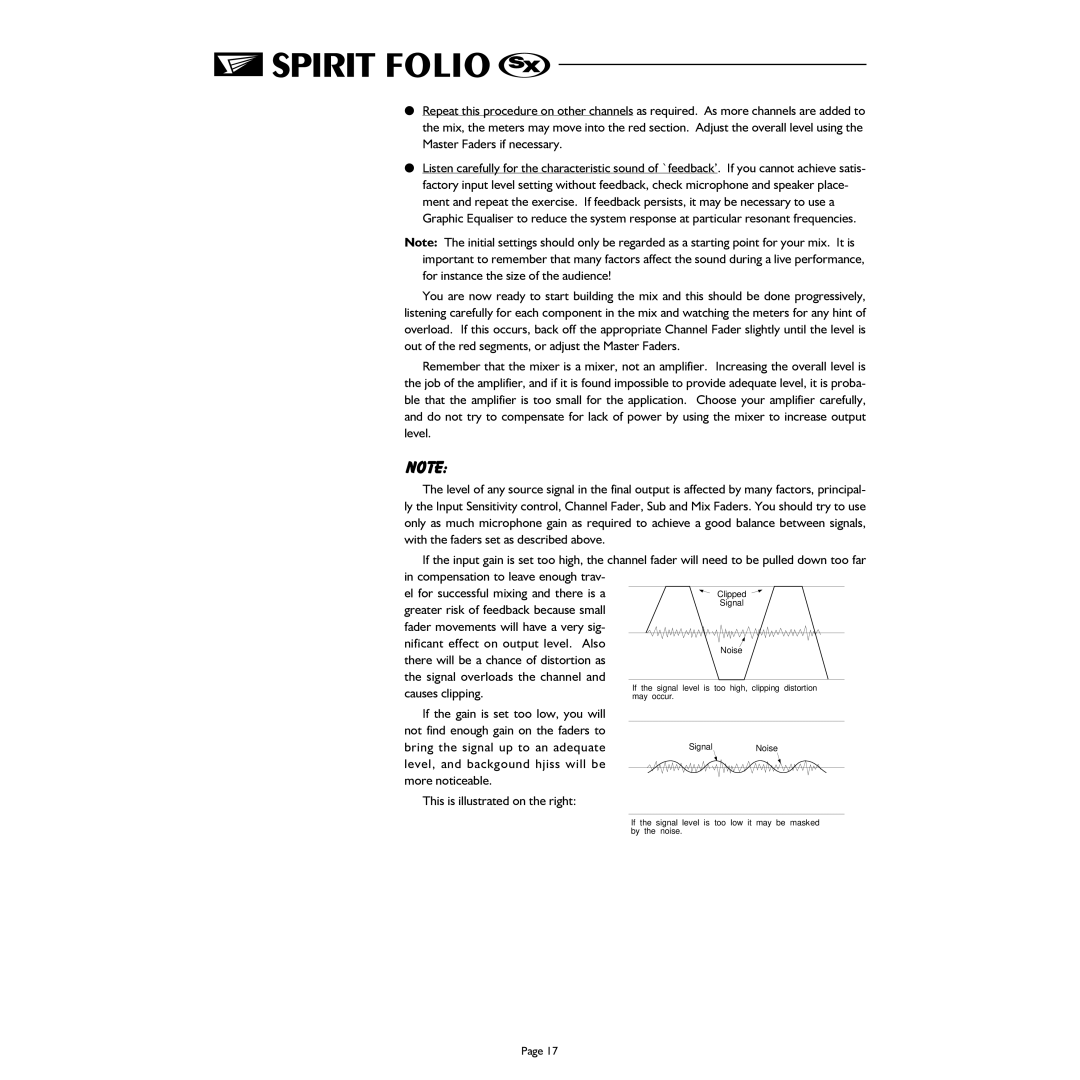
lRepeat this procedure on other channels as required. As more channels are added to the mix, the meters may move into the red section. Adjust the overall level using the Master Faders if necessary.
lListen carefully for the characteristic sound of `feedback’. If you cannot achieve satis- factory input level setting without feedback, check microphone and speaker place- ment and repeat the exercise. If feedback persists, it may be necessary to use a Graphic Equaliser to reduce the system response at particular resonant frequencies.
Note: The initial settings should only be regarded as a starting point for your mix. It is important to remember that many factors affect the sound during a live performance, for instance the size of the audience!
You are now ready to start building the mix and this should be done progressively, listening carefully for each component in the mix and watching the meters for any hint of overload. If this occurs, back off the appropriate Channel Fader slightly until the level is out of the red segments, or adjust the Master Faders.
Remember that the mixer is a mixer, not an amplifier. Increasing the overall level is the job of the amplifier, and if it is found impossible to provide adequate level, it is proba- ble that the amplifier is too small for the application. Choose your amplifier carefully, and do not try to compensate for lack of power by using the mixer to increase output level.
Note:
The level of any source signal in the final output is affected by many factors, principal- ly the Input Sensitivity control, Channel Fader, Sub and Mix Faders. You should try to use only as much microphone gain as required to achieve a good balance between signals, with the faders set as described above.
If the input gain is set too high, the channel fader will need to be pulled down too far in compensation to leave enough trav-
el for successful mixing and there is a greater risk of feedback because small
fader movements will have a very sig-
nificant effect on output level. Also there will be a chance of distortion as
the signal overloads the channel and causes clipping.
If the gain is set too low, you will not find enough gain on the faders to bring the signal up to an adequate level, and backgound hjiss will be more noticeable.
This is illustrated on the right:
SignalNoise
If the signal level is too low it may be masked by the noise.
Page 17
